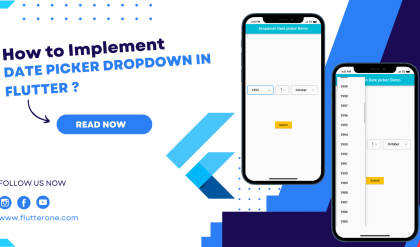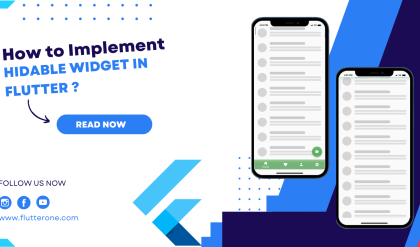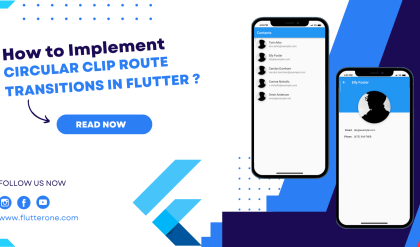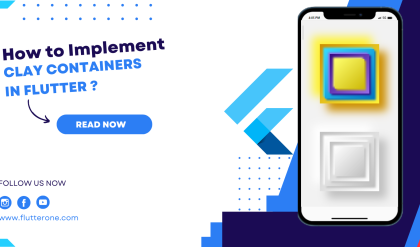Introduction:
The swipe-to-refresh feature allows users to easily refresh the content of a ListView in a Flutter app by performing a swipe gesture. This feature enhances the user experience by providing a convenient way to update the displayed data. In this step-by-step guide, you will learn how to implement the swipe-to-refresh feature in a Flutter ListView. By following this tutorial, you can empower your users to refresh the content of the ListView with a simple swipe gesture, keeping the app’s data up-to-date and providing a smooth user experience.
Content:
1. Set up a new Flutter project:
Ensure that you have Flutter installed and set up on your machine. Create a new Flutter project using the following command in your terminal:
flutter create swipe_to_refresh_listview
2. Add dependencies:
Open the pubspec.yaml file in your Flutter project and add the following dependencies:
dependencies:
flutter:
sdk: flutter
pull_to_refresh: ^2.0.0
Save the changes and run the following command in your terminal to fetch the dependencies:
flutter pub get
3. Implement the swipe-to-refresh feature:
In the Dart file containing your ListView, import the necessary packages:
import 'package:flutter/material.dart';
import 'package:pull_to_refresh/pull_to_refresh.dart';
Create a RefreshController instance:
RefreshController _refreshController = RefreshController(initialRefresh: false);
Wrap your ListView with a SmartRefresher widget:
SmartRefresher(
controller: _refreshController,
onRefresh: _onRefresh,
child: ListView.builder(
itemCount: _data.length,
itemBuilder: (context, index) {
// Build your list item here
},
),
),
Implement the _onRefresh method to handle the refresh action:
void _onRefresh() async {
// Simulate a delay to show the refresh indicator
await Future.delayed(Duration(seconds: 2));
// Perform the data fetching or refreshing logic here
// Call refreshCompleted() to indicate that the refresh is complete
_refreshController.refreshCompleted();
}
4. Customize the swipe-to-refresh indicator:
To customize the appearance of the swipe-to-refresh indicator, you can use the headerBuilder property of the SmartRefresher widget. For example, you can use the ClassicHeader provided by the pull_to_refresh package:
SmartRefresher(
//...
header: ClassicHeader(
refreshingText: 'Refreshing...',
idleText: 'Pull to refresh',
completeText: 'Refresh completed',
failedText: 'Refresh failed',
),
),
5. Test the swipe-to-refresh feature:
Save your changes and run the app using the following command in your terminal:
flutter run
6. Observe the swipe-to-refresh feature in action:
Upon running the app, you will see the ListView with the swipe-to-refresh functionality enabled. Users can now pull down on the ListView to trigger a refresh, and the indicator will show the appropriate state based on the refresh process.
Sample Code:
import 'package:flutter/material.dart';
void main() {
runApp(MyApp());
}
class MyApp extends StatelessWidget {
@override
Widget build(BuildContext context) {
return MaterialApp(
title: 'Swipe to Refresh',
theme: ThemeData(
primarySwatch: Colors.blue,
),
home: SwipeToRefreshScreen(),
);
}
}
class SwipeToRefreshScreen extends StatefulWidget {
@override
_SwipeToRefreshScreenState createState() => _SwipeToRefreshScreenState();
}
class _SwipeToRefreshScreenState extends State<SwipeToRefreshScreen> {
List<String> items = List.generate(20, (index) => 'Sample item ${index + 1}');
Future<void> _refreshItems() async {
// Simulate a delay to show the refreshing indicator
await Future.delayed(Duration(seconds: 2));
// Update the items
setState(() {
items = List.generate(20, (index) => 'Sample item ${index + 1} (refreshed)');
});
}
@override
Widget build(BuildContext context) {
return Scaffold(
appBar: AppBar(
title: Text('Swipe to Refresh'),
),
body: RefreshIndicator(
onRefresh: _refreshItems,
child: ListView.builder(
itemCount: items.length,
itemBuilder: (context, index) {
return Container(
margin: EdgeInsets.symmetric(vertical: 4,horizontal: 4),
decoration: BoxDecoration(
color: Color.fromARGB(255, 21, 39, 63)
),
child: ListTile(
title: Text(items[index],style: TextStyle(color: Color.fromARGB(255, 252, 252, 252),fontWeight: FontWeight.w700),),
),
);
},
),
),
);
}
}
Output:
Conclusion:
Congratulations! You have successfully implemented the swipe-to-refresh feature in a Flutter ListView. By following this step-by-step guide, you have empowered your users to refresh the content of the ListView with a simple swipe gesture, enhancing the user experience and keeping the displayed data up-to-date. Incorporate this feature into your Flutter app to provide a smooth and interactive user interface.






